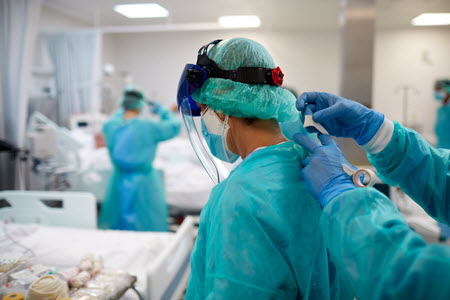
Thank you for the sacrifices you have made and for all you have done to support your patients, organizations, and our communities. The COVID-19 pandemic has provided everyone with unique sets of challenges and opportunities within our professional and personal lives.
We as infection preventionists may have been called upon to use our skills and expertise to ensure the safety and well-being of others not only in the workplace, but also within our communities at schools, places of worship, athletic venues, and many other settings.
We faced a myriad of changing initiatives in 2020, and worked to stay abreast with the constantly updated guidance we relied (and continue to rely) upon. While COVID-19 variants continue to present challenges, in parts of the world life is slowly returning to a pre-pandemic normal.
While last year many reporting requirements were relaxed, infection preventionists are again required to report select healthcare-associated infections (HAIs) along with the responsibility of keeping patients, staff and visitors safe from transmissible diseases, including COVID-19.
Renewed focus for 2021 and beyond
2021 continues to provide us with opportunities to re-focus on the HAI prevention bundles and to look optimistically toward the future.
As a foundation for this, we can work to maintain the increased attention (both within our organizations and within society as a whole) on basic infection prevention practices such as hand hygiene, cleaning and disinfection, and the proper use of personal protective equipment (PPE) .
A 2021 survey of Association for Professionals in Infection Control and Epidemiology (APIC) members, conducted by 3M, shows that staff compliance with infection prevention protocols (including the proper use of PPE) has shifted prior to, during, and a year into the COVID-19 pandemic.
In March 2021, respondents report the majority of time is spent on infection prevention strategies and protocols, a slight contrast to a June 2020 APIC survey, also conducted by 3M, when the priority was strategies and protocols focused on sources of contamination that may lead to infection.
As we continue to navigate what infection prevention looks like today and into the years ahead, we must continue partnerships created within our healthcare organizations as well as those fostered with industry.
This teamwork is key to helping prevent hospital-acquired conditions (HACs), such as pressure injuries, as well as HAIs (e.g., peripheral bloodstream infections (BSIs); catheter-associated urinary tract infections (CAUTIs); and surgical site infections (SSIs)).
Helping prevent pressure injuries and peripheral BSIs may have historically been lower on our priority lists as infection preventionists; however, the aforementioned APIC survey demonstrates how these and other HAI/HAC prevention initiatives have now become higher priorities.
The survey also shows how the variety of HACs/HAIs an infection preventionist faces daily spans almost every care setting. Therefore, continued collaboration among clinicians, facility leadership, and industry, along with patients and families is paramount to creating a safe, positive, and cost-effective experience for staff and patients.
There is no one solution that can address the multitude of challenges an infection preventionist faces each day. However, taking a holistic approach to HACs/HAIs by exploring the people, equipment and environment, and practice-related factors that contribute to their development is a framework to drive action.
Please continue to maintain safety, stay strong, and continue to perform hand hygiene. You can learn more about 3M’s comprehensive approach to infection prevention here.
